Even without fancy gear or experience, you can uncover agates in Arkansas if you know the right kinds of places to explore. The land hides them in plain sight, and they’re scattered through creek beds, bluffs, and old deposits left behind long ago.
Some of the best finds come from areas that look unremarkable at first. You might step right over them unless you know what to look for and how the landscape shifts with time and weather.
It’s not just luck that brings these finds to light. Knowing how the landscape scatters and reshapes its hidden treasures gives you a better chance to spot one when the sun hits it just right.
Once you start recognizing the signs, every walk along a creek or dirt road could lead to a pocket full of color. A little knowledge about where to begin can turn a casual day outdoors into a real agate haul.
What is Arkansas Agate?
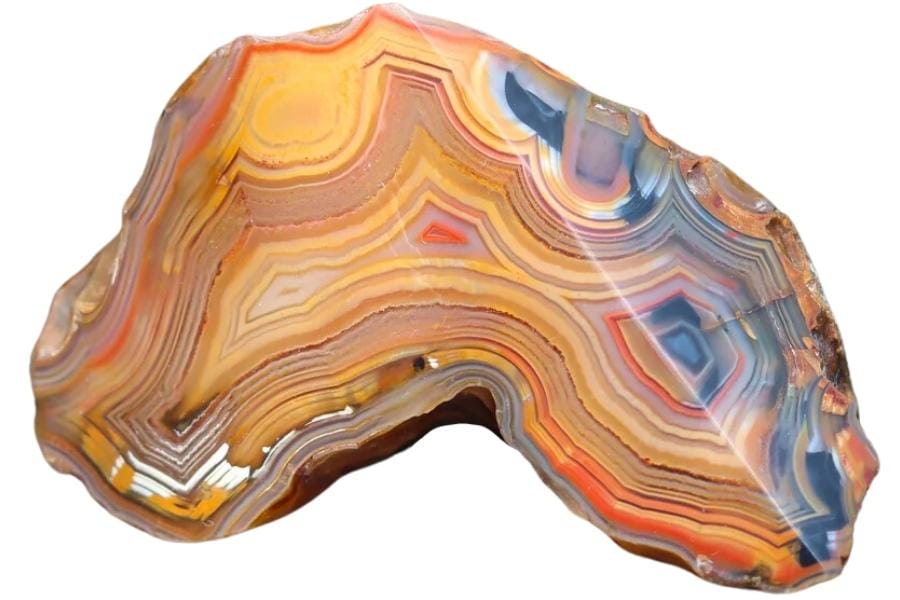
Agate is a type of chalcedony— a mineral made primarily of quartz. What sets it apart is its captivating and often banded appearance, which comes in a dazzling variety of colors and patterns.
Imagine nature’s artwork encapsulated within a stone! No wonder the value of agate reflects its radiant beauty.
Agates can be found in various locations worldwide, including in Arkansas, but they often form in volcanic and sedimentary environments.
Volcanic agates originate from volcanic rock cavities and are known for their vibrant colors and intricate patterns. They are born from hot magma cooling and interacting with minerals in underground cavities.
On the other hand, sedimentary agates are formed by the slow deposition of silica-rich fluids over time, creating more subtle, earth-toned colors.
Agate’s looks and appeal can be so diverse and if you’re curious to know about its different types, below are some only of the most unique ones out there:
Blue Lace Agate
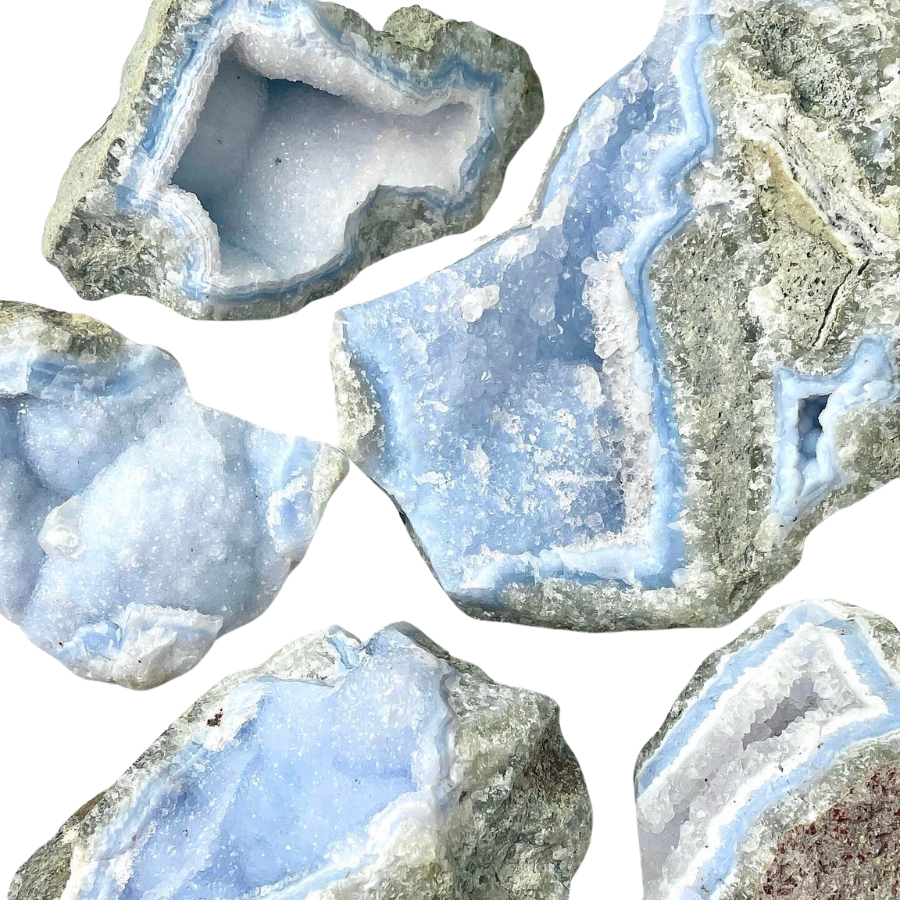
Blue lace agate is like the soft, sky-blue waves with lines that swirl and twist like delicate lace.
Its pattern comes from slow-forming layers of quartz, which create those beautiful, lace-like bands.
The bands of this agate type are often in shades of light blue, white, and sometimes a bit of grey. It’s different from other agates, which usually have more intense colors and stronger patterns.
The value of blue lace agate lies in its soft, tranquil look and the feeling of calm it brings. It’s often used in jewelry or as a decorative stone.
If you want REAL results finding incredible rocks and minerals you need one of these 👇👇👇
Finding the coolest rocks in isn’t luck, it's knowing what to look for. Thousands of your fellow rock hunters are already carrying Rock Chasing field guides. Maybe it's time you joined the community.
Lightweight, mud-proof, and packed with clear photos, it’s become the go-to tool for anyone interested discovering what’s hidden under our red dirt and what they've already found.
Join them, and make your next rockhounding trip actually pay off.
What makes it different:
- 📍 Find and identify 140 incredible crystals, rocks, gemstones, minerals, and geodes across the USA
- 🚙 Field-tested across America's rivers, ranchlands, mountains, and roadcuts
- 📘 Heavy duty laminated pages resist dust, sweat, and water
- 🧠 Zero fluff — just clear visuals and straight-to-the-point info
- ⭐ Rated 4.8★ by real collectors who actually use it in the field
Moss Agate

Instead of having the typical banding for which the different types of agates are known, moss agate has green inclusions that look like moss or trees.
These green patterns aren’t real plant material, though. They’re minerals like chlorite or iron oxide.
In some cultures, this type of agate is known as the “gardener’s stone” because of its green, plant-like appearance. It’s believed to help plants grow.
The price of moss agate can vary. It’s often quite affordable, but the more distinct and picturesque the green patterns, the more it might cost.
Fire Agate
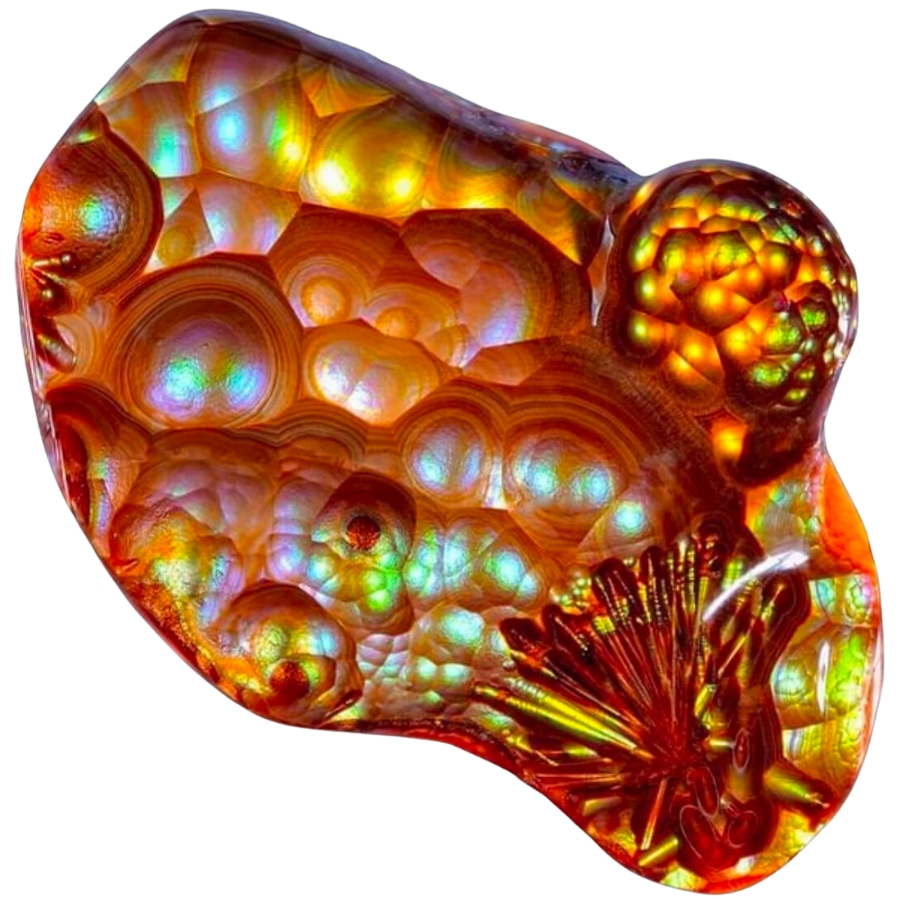
Fire agate is known for its incredible colors and the way it sparkles like fire. It’s got layers of silica and iron oxide that reflect light, creating a fiery effect.
When you look at fire agate, it’s like seeing flames trapped inside. Its colors can range from reds and oranges to greens and golds, all shimmering under the surface.
You might be wondering, “What is fire agate worth?” Well, its value comes from its rare beauty. The more color and sparkle, the more valuable the stone is.
Its fiery iridescence and lively play of color are used in jewelry pieces that are meant to stand out.
Dendritic Agate
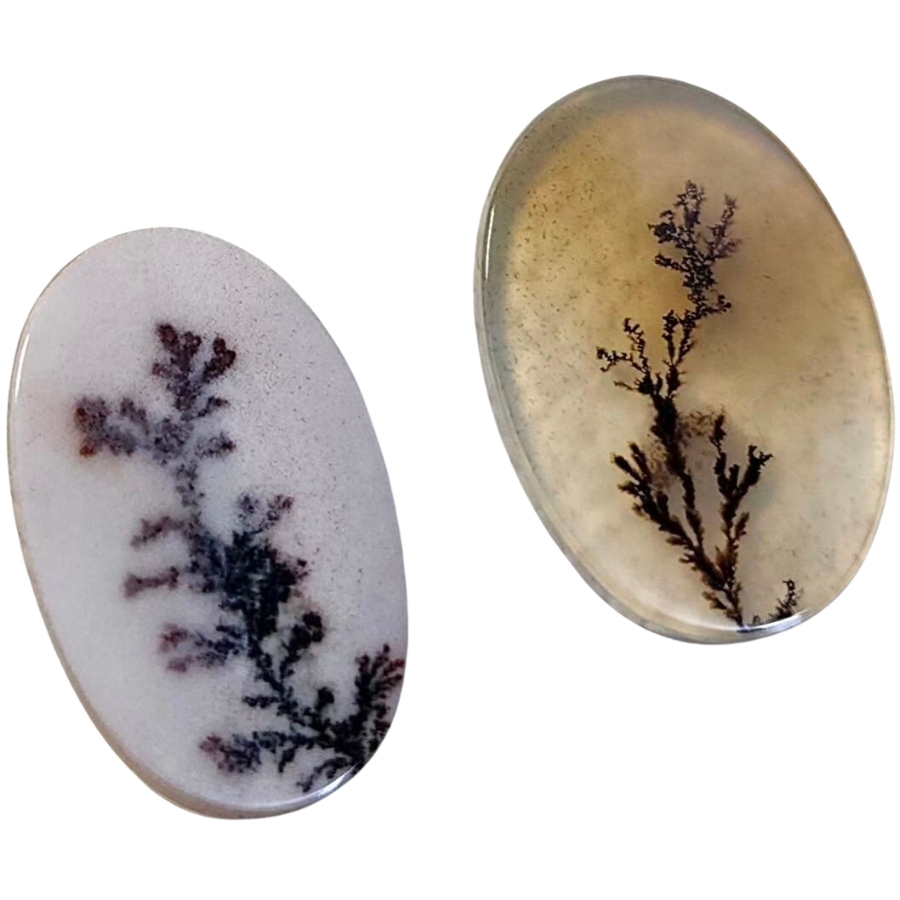
Dendritic agate is known for patterns that look like tiny trees or shrubs. Like moss agate, these patterns aren’t actual plants. They’re made of minerals, mostly manganese or iron oxides.
When you look at a dendritic agate, it’s like peering into a miniature forest or a frosty winter landscape.
The base of the stone is usually translucent to opaque, and the “dendrites”— those tree-like patterns— are often black or brown.
When it comes to how much dendritic agate is worth, it can vary. The more detailed and distinct the patterns are, the more it’s usually valued.
In some cultures, dendritic agate is believed to bring fullness and richness to life.
Crazy Lace Agate
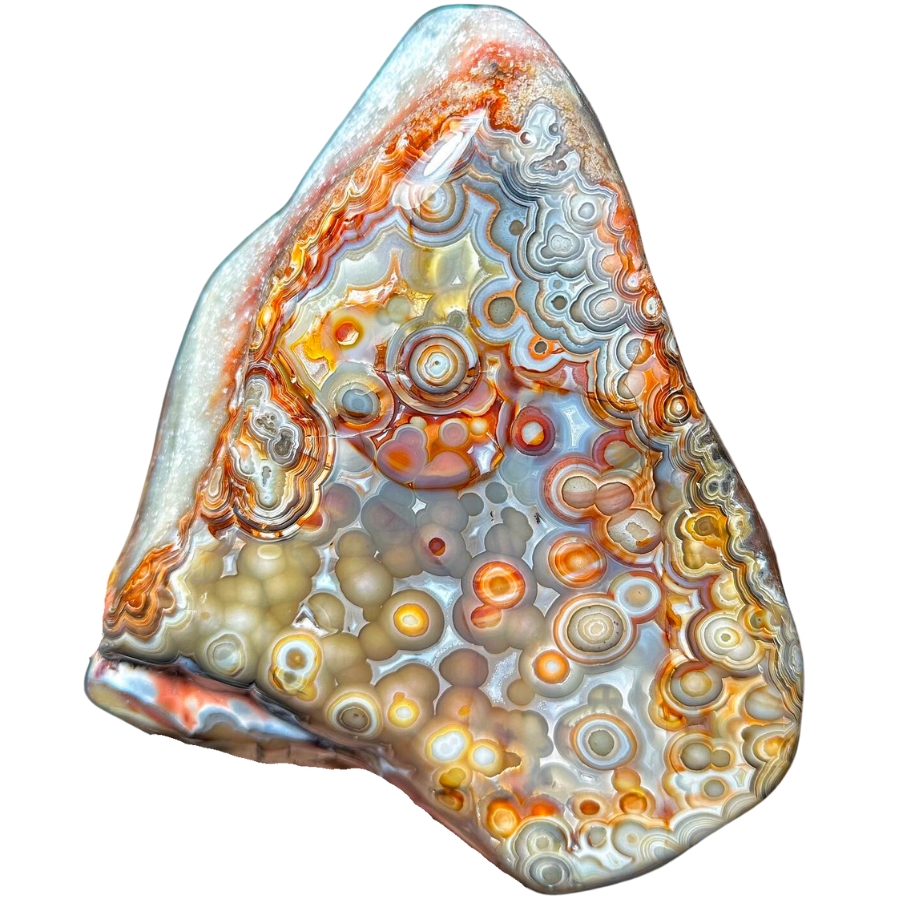
Crazy lace agate is like a party in a rock! It’s got swirls, circles, and all sorts of wild patterns dancing across it.
Its colors can be a mix of red, orange, yellow, and brown, and sometimes even a bit of gray or white.
What makes crazy lace agate stand out is its vibrant and complex patterns. No two pieces are the same. This distinctiveness is a big reason why it’s so valued.
Despite its wild and ‘crazy’ appearance, it’s sometimes called the “Laughter Stone” or “Happy Lace” because of the joy and positive vibes it’s believed to bring.
Laguna Agate
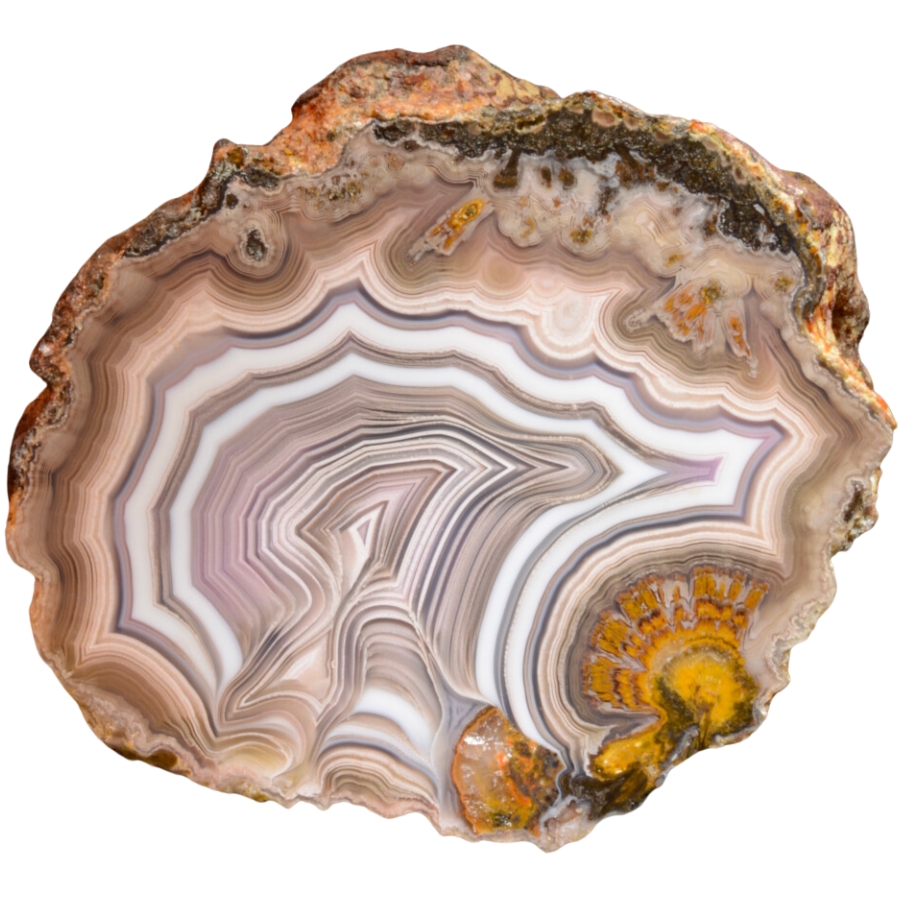
Laguna agate has incredibly sharp and fine banding. It has layers of red, orange, pink, yellow, and sometimes even purple and white all stacked in neat, tight bands.
These bands can form eye-catching patterns, like swirls, loops, and even landscapes.
The different colors of its bands come from various minerals present in the water at the time of its formation.
Laguna agate is considered one of the finest agates in the world due to its exceptional banding. This high regard among agate varieties makes it a prized possession for collectors.
Condor Agate
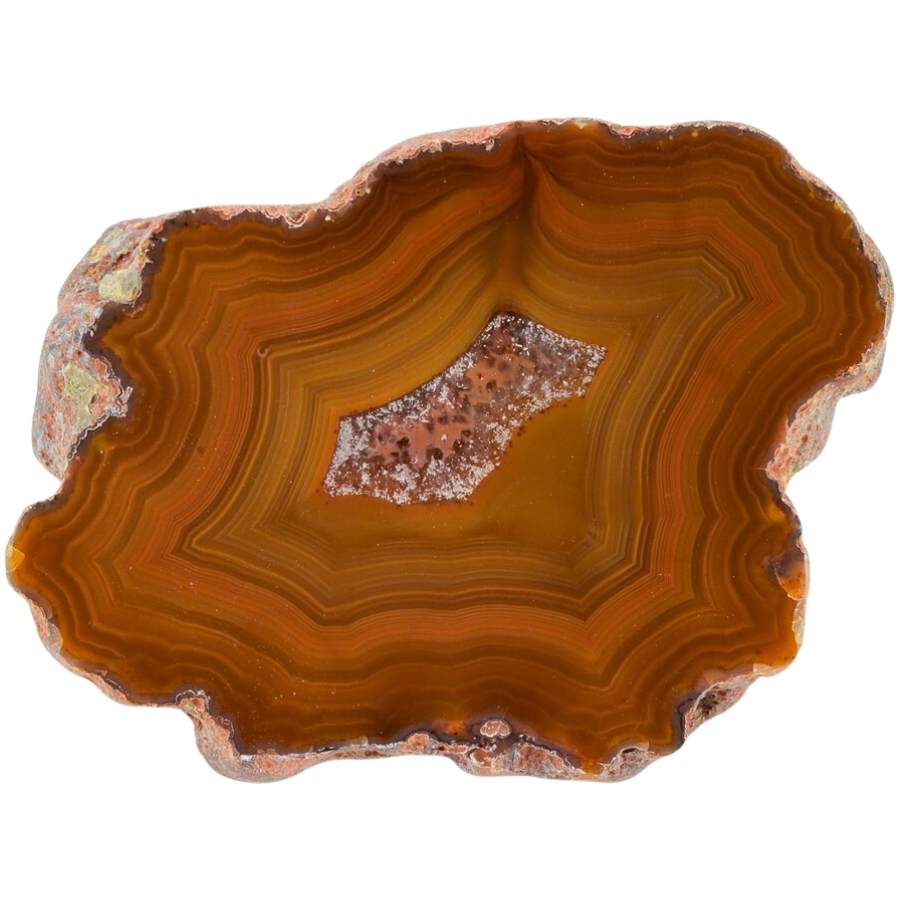
Condor agate is a real standout. It’s known for its bright, vivid colors and complex patterns.
It has reds, oranges, yellows, and sometimes even blues and greens all swirling together. These colors form in bands or in more random, artistic patterns.
The intensity and variety of its colors is what makes condor agate so special. It’s often used by artists and craftsmen who want to make a statement with their work.
Condor agate’s bold colors and patterns can turn a simple piece of jewelry or art into something really eye-catching.
Fortification Agate (Banded Agate)
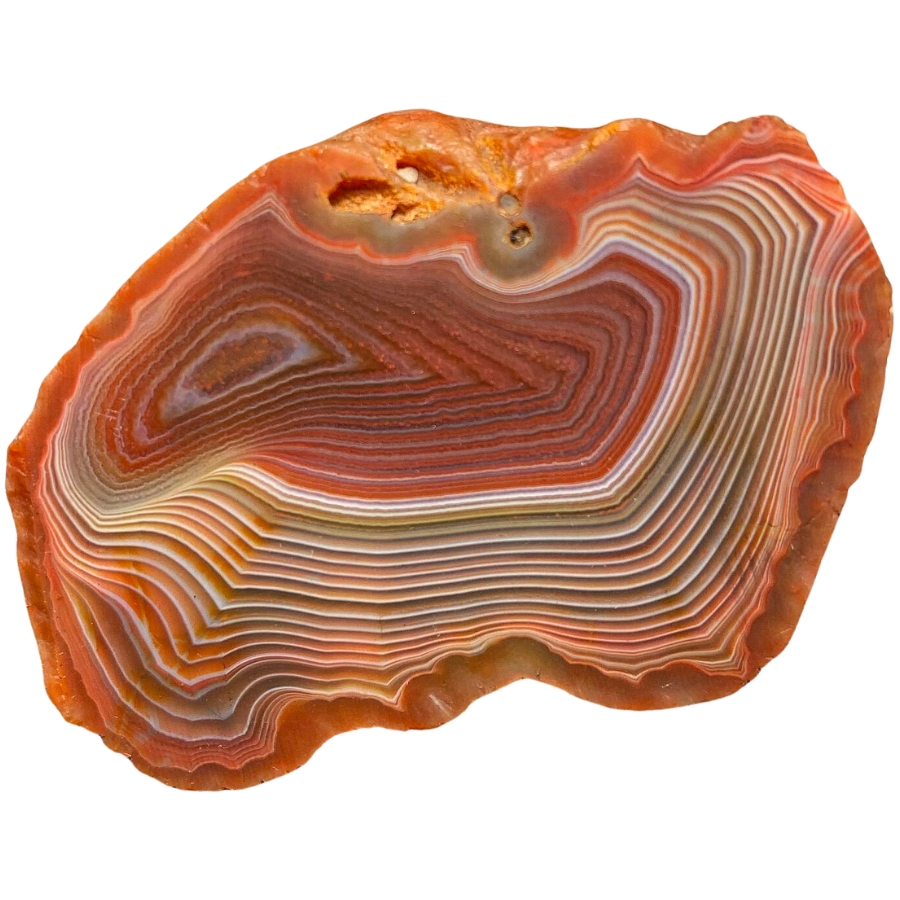
Fortification agate gets its name because the patterns inside it look like the aerial view of a fortified city.
Imagine seeing bands of color forming shapes that look like walls, with sharp angles and curves. They are usually in different colors, making each layer stand out.
If fortification agate is valuable, it’s because of its distinct patterns and colors. Its unique look makes it sought after for jewelry and as a collector’s item.
The clearer and more defined the patterns, the more valuable the stone can be. Some people also believe it can help with relaxation and calmness.
Iris Agate
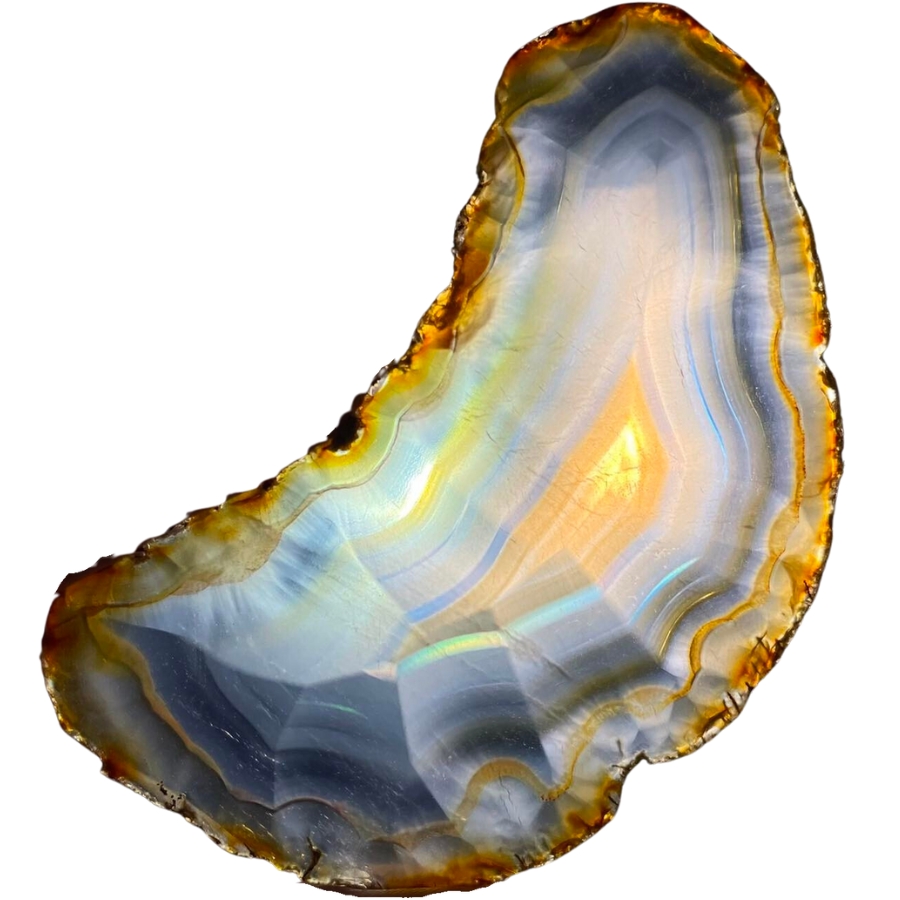
Iris agate looks like a regular agate at first, but when you hold it up to the light, something amazing happens. It shows all these rainbow colors, like light passing through a prism.
This is because it has very thin layers of silica, and when light hits these layers, it splits into all the colors of the rainbow.
The formation of iris agate is similar to other agates, but its layers are super thin, which is what creates the rainbow effect.
The value of iris agate comes from its unique ability to show these colors. In the past, people even used to think it had magical properties because of the way it showed colors. They saw it as a stone of good luck and wonder.
Plume Agate

Plume agate gets its name from its patterns that look like soft, feathery plumes. These plumes can be in all sorts of colors: red, black, green, or yellow, set against a translucent or opaque background.
The way these plumes seem to float in the stone makes it look like a frozen underwater scene or like feathers caught in a breeze.
The plumes are made of minerals like manganese or iron oxide, which get trapped in the silica during the agate’s formation and create the feathery patterns.
The price of plume agate can vary depending on how clear and intricate the patterns are. The more detailed and colorful the plumes, the more the stone is usually worth.
Picture Agate (Scenic Agate)
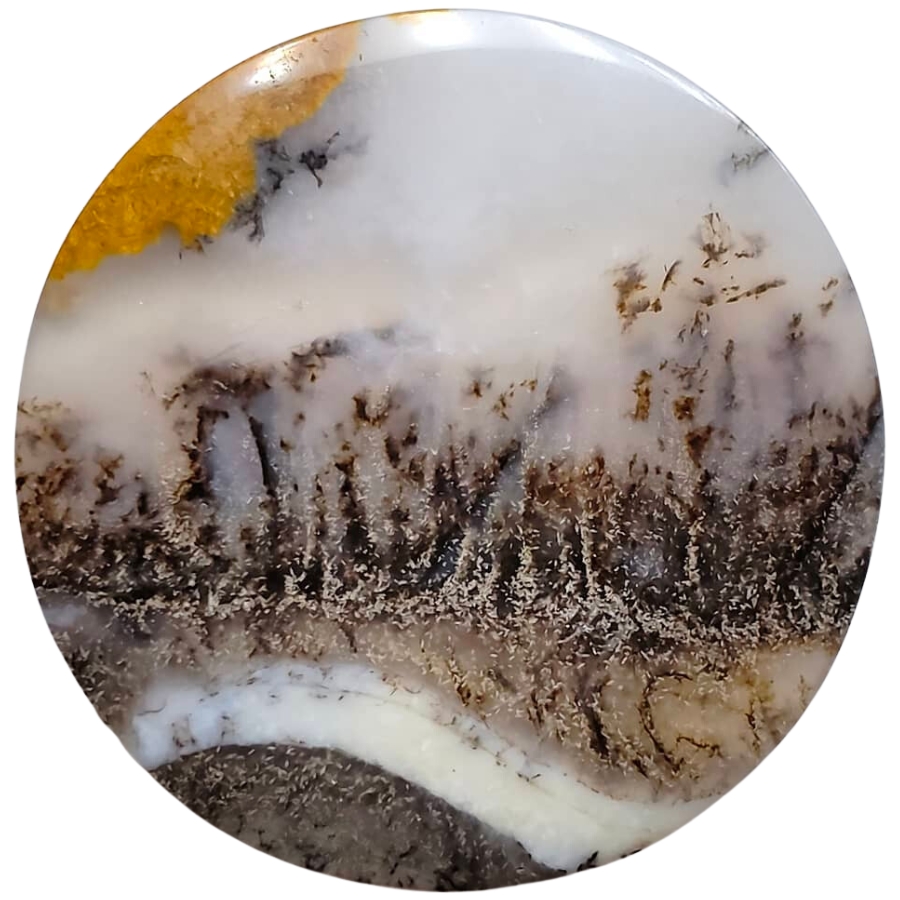
Picture agate is like a snapshot of nature captured in stone because it looks like it has pictures or scenes right inside it.
These “pictures” are actually natural patterns that resemble landscapes, mountains, trees, or even skies. They are usually in different shades of brown, white, and gray against a more translucent background.
The different patterns in picture agate or what’s also called scenic agate are made by various minerals in the water filled with silica that forms it.
If you’re thinking, “What is picture agate worth?“, its value comes from how distinct, clear, and detailed the natural “pictures” are.
Turritella Agate

Turritella agate is not your typical agate because it’s full of fossilized snail shells! The shells belong to a creature called Turritella, a type of sea snail.
These shells are tightly packed and create a pattern that looks like a bunch of tiny, swirling towers. The background of the agate is usually a dark, earthy color, which makes the white or cream-colored snail shells really pop.
Over millions of years, these snail shells got buried in sediment and eventually became fossilized. As time went on, silica-rich water flowed through the sediment, turning it into the agate we see today.
The value of turritella agate comes from its unique blend of geology and history. More than a pretty stone, it’s a piece of ancient life preserved in rock.
Fairburn Agate
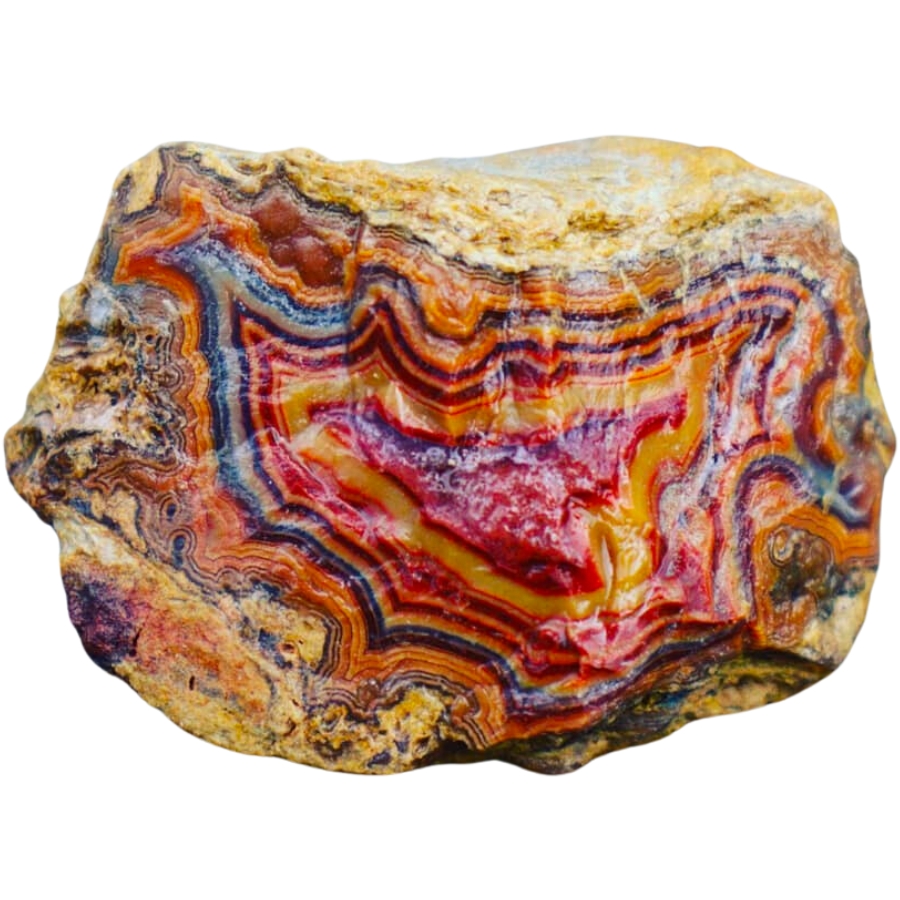
Known for its intricate patterns and bold colors, Fairburn agate is another fascinating type of agate. It usually has bands and swirls of different colors like red, yellow, orange, brown, and sometimes even pink or purple.
What’s special about these patterns is they often look like they’re in layers, creating a 3D effect. It’s like looking at a landscape made of stone.
It’s named after a place called Fairburn in South Dakota. This gives a clue about where it was first discovered.
People value Fairburn agate for the skill it takes to cut and polish it, which makes the patterns and colors really stand out.
Sagenite Agate
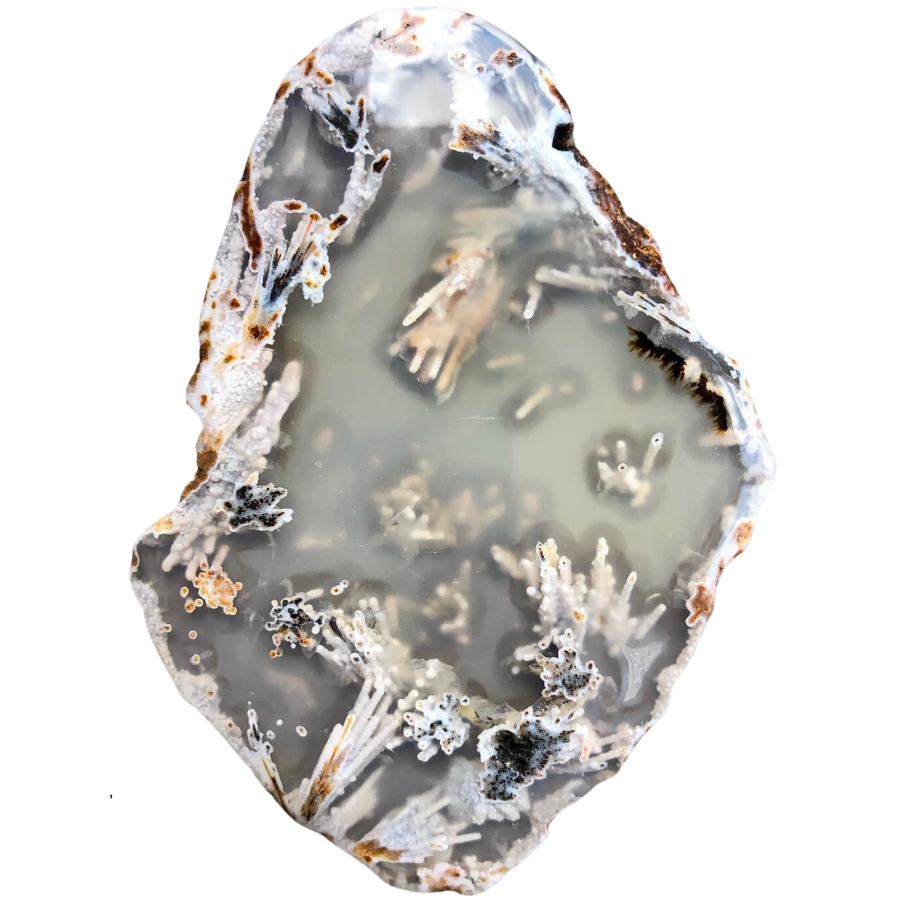
Sagenite agate has needle-like inclusions that look like tiny sprays of crystals inside it. They can be gold, silver, black, or even green, and they spread out in all directions, creating an amazing pattern.
The base of the agate is usually translucent, which lets you see these intricate needle patterns clearly.
These patterns are actually other minerals, like rutile or goethite, that get trapped inside the forming agate. These minerals grow in a crystal shape, looking like needles or hair.
Sagenite agate is often used in jewelry and other decorative items, with some people thinking that its needle patterns look like fireworks or starbursts.
Tree Agate
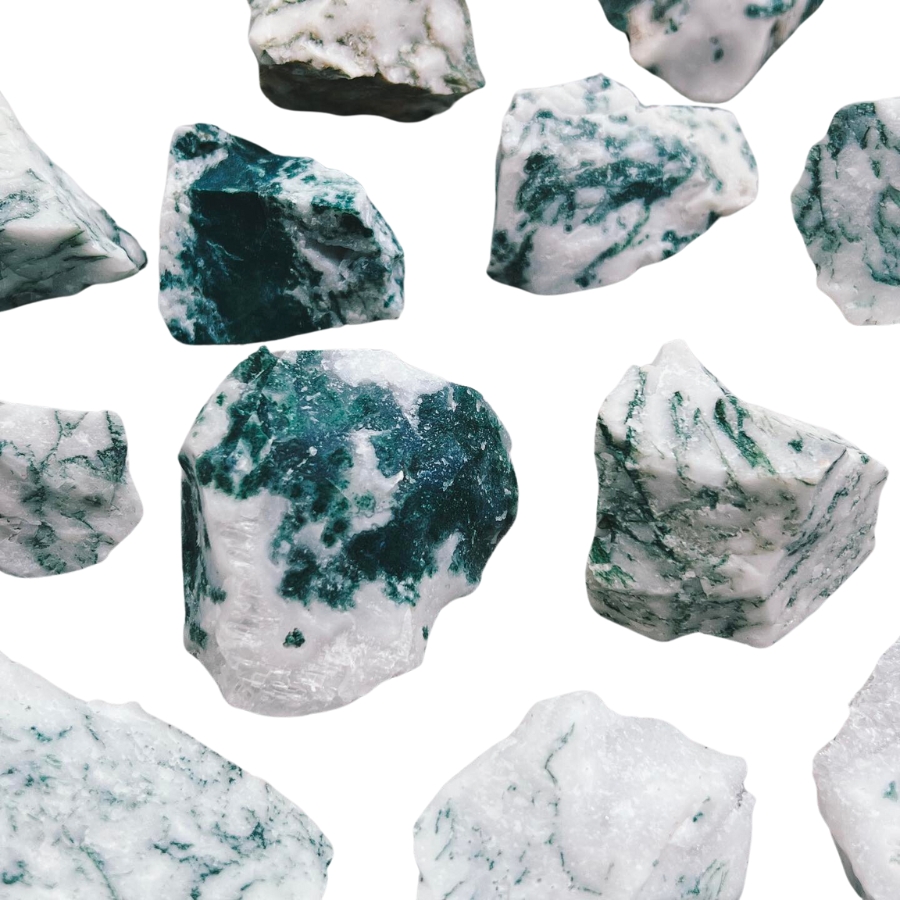
Tree agate, as its name suggests, looks like it’s got tiny trees or branches inside it. These tree-like patterns are usually green and spread out against a white or light gray background.
The green patterns aren’t actual trees, though. They’re made of minerals like chlorite or manganese.
Each piece of tree agate is different. You won’t find two that are exactly the same. It’s valued for its looks and it’s often used in jewelry and decorations.
The key factors in our recommendations are:
- The deep experience and understanding of our team about the area
- Recommendations from local groups and clubs
- How easy it is to get the a particular location
- Safety and potential hazards when collecting
- Weighing private and public locations
- The ability for both experienced and novice agate enthusiasts to find great samples
With these factors in mind we’ve been able to put together a fantastic list that just about anyone can use!
Kids. Beginners. Pros. Doesn’t matter. This book has become the go-to because it works for everyone.
Magy put it bluntly: “Identify rocks, crystals and minerals is so easy now!”
That’s not by accident, the photos are crisp, the callouts are simple, and the design is rugged enough to throw in a backpack without worrying. Whether it’s your first geode or your hundredth, this guide keeps the fun part simple: finding more treasures.
The Best Spots To Find Agates in Arkansas
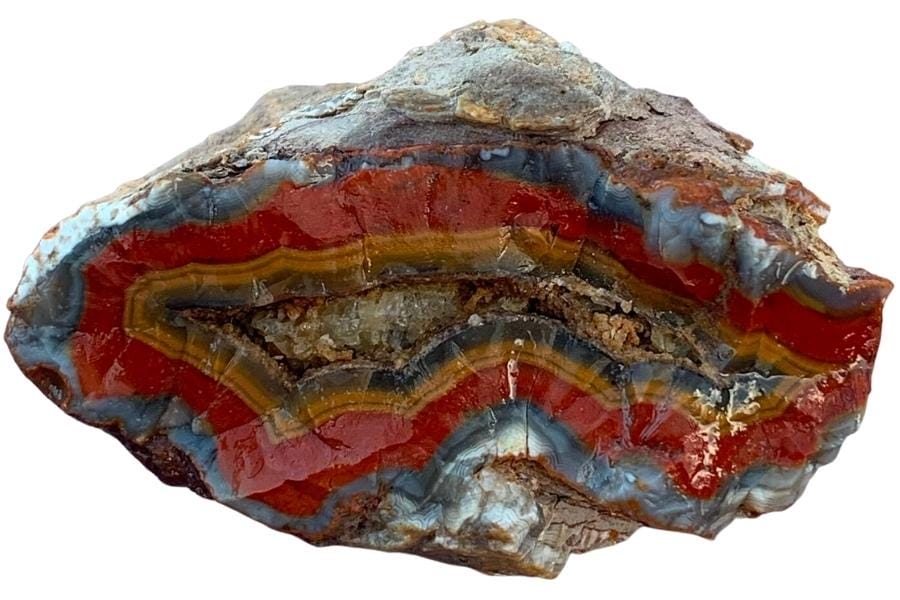
While there are many great gem mine sites in Arkansas, you may want to focus your search on the following places if you want to find agates here:
Always Confirm Access and Collection Rules!
Before heading out to any of the locations on our list you need to confirm access requirements and collection rules for both public and private locations directly with the location. We haven’t personally verified every location and the access requirements and collection rules often change without notice.
Many of the locations we mention will not allow collecting but are still great places for those who love to find beautiful rocks and minerals in the wild without keeping them. We also can’t guarantee you will find anything in these locations since they are constantly changing.
Always get updated information directly from the source ahead of time to ensure responsible rockhounding. If you want even more current options it’s always a good idea to contact local rock and mineral clubs and groups
Crater of Diamonds State Park

Situated near the town of Murfreesboro, the Crater of Diamonds State Park covers over 37 acres of land. Its accessible location, diverse geological features, and promise of finding treasures make it an exciting place to explore.
This park is rich in rolling hills, dense forests, and a picturesque natural landscape. Its centerpiece is a volcanic crater, often referred to as the “diamond pipe.”
In addition to diamonds, the Crater of Diamonds State Park is known for other gemstones and minerals, including agate.
Getting here is relatively easy, as it’s accessible by car from major cities in the region. But before you head out here, it helps if you review Arkansas’ updated collecting guidelines.
Where we found agates in the Crater of Diamonds State Park
You can search through the open fields and washed gravels at the Crater of Diamonds State Park to find stunning Arkansas agates.
Poplar Creek
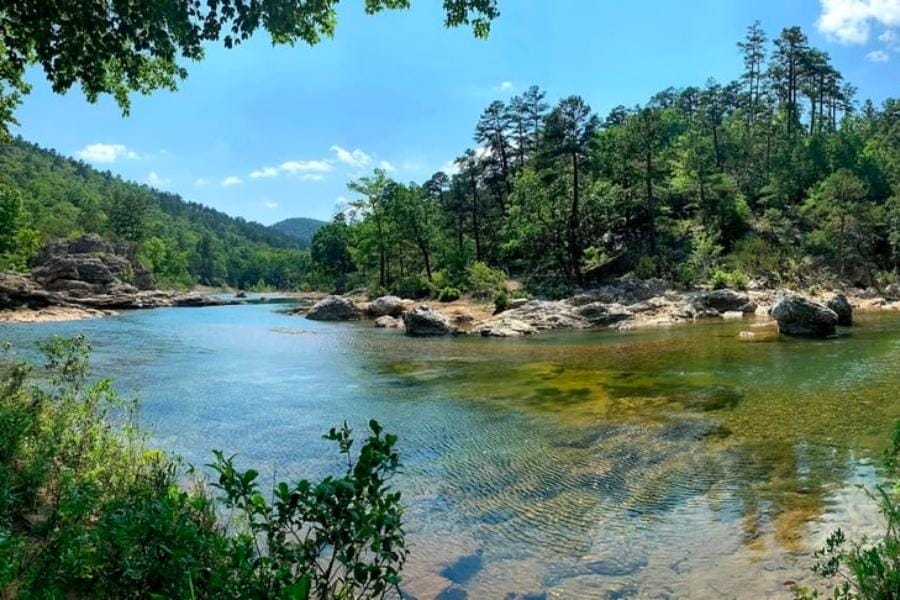
Poplar Creek is located in the heart of the Ouachita National Forest. It offers a delightful blend of natural beauty and geological wonders.
Nestled within the lush and scenic Ouachita Mountains, the creek meanders through dense woodlands and serene valleys.
The terrain along Poplar Creek varies, making it an ideal spot for agate hunting. You can explore creek beds and the surrounding areas to search for a wide range of minerals, including agate.
Getting here is relatively easy if you want to visit, as it’s situated within the Ouachita National Forest, a well-known and accessible region in Arkansas. The creek can be reached by car from nearby towns and cities.
Where we found agates in Poplar Creek
You can collect banded agates if you collect upstream of Poplar Creek, along both sides, all the way through the Crowley’s Ridge State Park headwaters.
Crowley’s Ridge

Crowley’s Ridge is a unique and fascinating natural feature that offers both scenic beauty and potential for agate hunting.
This long, narrow ridge, stretching for approximately 200 miles across the eastern part of our state, stands out in the flatlands of the Mississippi Alluvial Plain.
Crowley’s Ridge is characterized by its elevated, winding ridge shape that stands above the surrounding lowlands. It’s the result of an ancient geological process, formed by the accumulation of wind-blown sediments over millions of years.
Covered by lush hardwood forests, the terrain along Crowley’s Ridge is diverse and ideal for agate hunting.
Visiting here is relatively easy, as it runs through several towns and cities in eastern Arkansas. Major highways and roads provide access to various points along the ridge.
Where we found agates in Crowley’s Ridge
Agates and other minerals can often be found in the creeks and streams that cut through Crowley’s Ridge. The agates found here are typically small, but they are known for their vibrant colors and unique patterns.
Clabber Creek
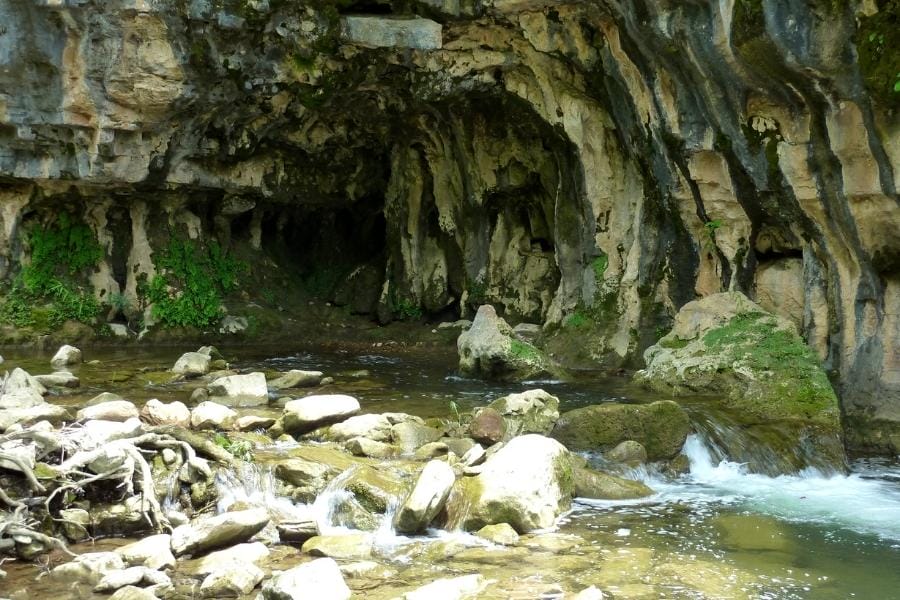
Clabber Creek offers a delightful blend of natural beauty and geological treasures, including the possibility of discovering colorful agate.
It’s surrounded by picturesque woodlands and rolling hills of central Arkansas. Nestled within this, the creek meanders through scenic valleys, creating an ideal setting for outdoor adventures.
The terrain along Clabber Creek is diverse and well-suited for agate hunting. You can explore the creek beds and the surrounding areas to search for various minerals, including agate.
If you’re planning to go here, it’s relatively easy. It’s located in the central part of Arkansas, not far from the capital city, Little Rock. Major highways and well-maintained roads provide convenient access to this area.
Where we found agates in Clabber Creek
Agate can often be found in the gravel and rocky substrates of Clabber Creek, particularly after heavy rains or during periods of high water flow.
Wynne

Wynne is a charming destination for rockhounds and nature enthusiasts seeking the thrill of agate hunting. It’s situated in a region that is rich in geological diversity, making it an ideal location for rockhounding adventures.
This town is endowed with a gently rolling landscape typical of eastern Arkansas. The area is known for its fertile farmland and proximity to the Mississippi River.
The terrain in and around Wynne varies, offering different environments for treasure hunters. You can explore the creeks, stream beds, and the surrounding areas to search for a variety of minerals, including agate.
Like our other recommended spots, Wynne is conveniently located near major highways and well-connected roads. It’s approximately an hour’s drive from Memphis, Tennessee, and less than two hours from Little Rock.
Where we found agates in Wynne
You can find agates in the gravel and sediment deposits of Wynne, especially in areas where water has flowed over time.
Other Great Places To Find Agates in Arkansas
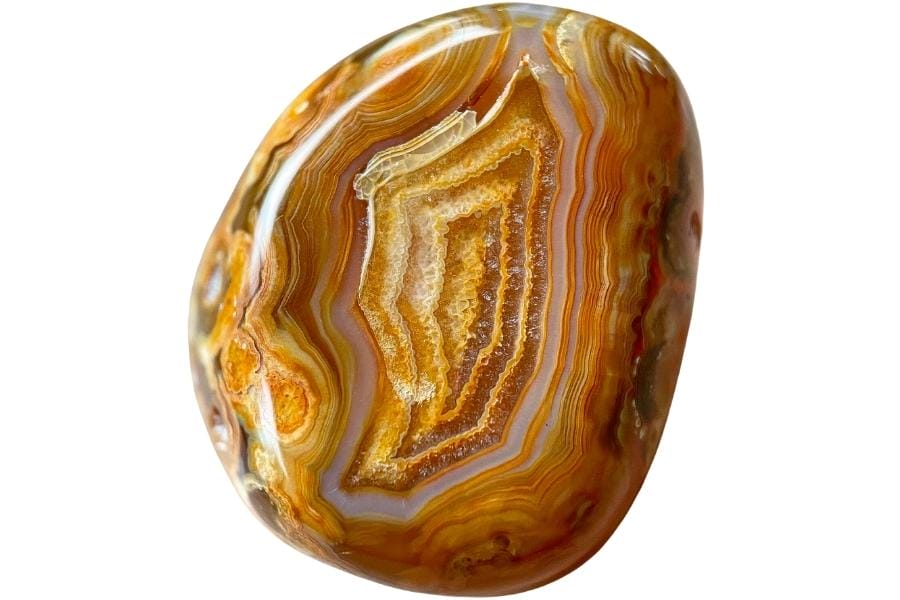
If you’re looking for other places where you can mine for agates in Arkansas, below are more prime spots that you can consider visiting:
Our recommendations by county
| County | Location |
| Craighead | Several gravel pits north of the county road |
| Cross | East of eroded canyons in former gravel pit in Vanndale |
| Garland | Union Carbide Mine |
| St. Francis | Crow Creek |
| St. Francis | Gravel pit in Colt area |
| St. Francis | Tributary of St. Francis River |
| Wynne | Copperus Creek |
Additional areas you can find agates
Even though an area is sure to have agates, locating these natural wonders out in the wild can be quite tricky. That’s why it pays to know how to find agates and what specific areas you should focus your search on, such as:
Streams and Creeks
Streams and creeks are fantastic places to search for agate, especially in Arkansas. The flowing water wears away the surrounding rocks and sediment, exposing agates hidden beneath the surface. Over time, it brings these treasures to the surface.
The constant motion of the water also helps to separate agate from other rocks and minerals, allowing it to settle in specific areas like gravel bars and stream beds.
Lastly, the accessibility of streams and creeks makes them ideal for rockhounding enthusiasts of all levels.
Rivers and Riverbanks
Rivers and their banks are also excellent places for hunting Arkansas agates. The continuous water flow has gradually exposed agate and other gemstones, bringing them to the surface.
The dynamic movement of river currents also helps to sort and separate rocks and minerals, causing agate to settle in specific areas along the riverbanks.
And like streams and creeks, the rivers and river banks in Arkansas offer relatively easy access, making them ideal locations even for those who are just starting their rockhounding explorations.
Sediment Deposits
If you’re looking for agates in Arkansas, we also recommend searching through sediment deposits.
Agate forms within sedimentary rocks, often as nodules or concretions. Over time, these rocks weather and erode, releasing agate specimens into the surrounding sediment layers.
Sediment deposits also tend to accumulate a mix of materials, and agate can become concentrated within these deposits due to its durability and distinctiveness.
Additionally, since Arkansas has a rich geological history, sedimentary rocks such as those found in riverbanks or creek beds often contain agates.
Common Agate-Hunting Questions
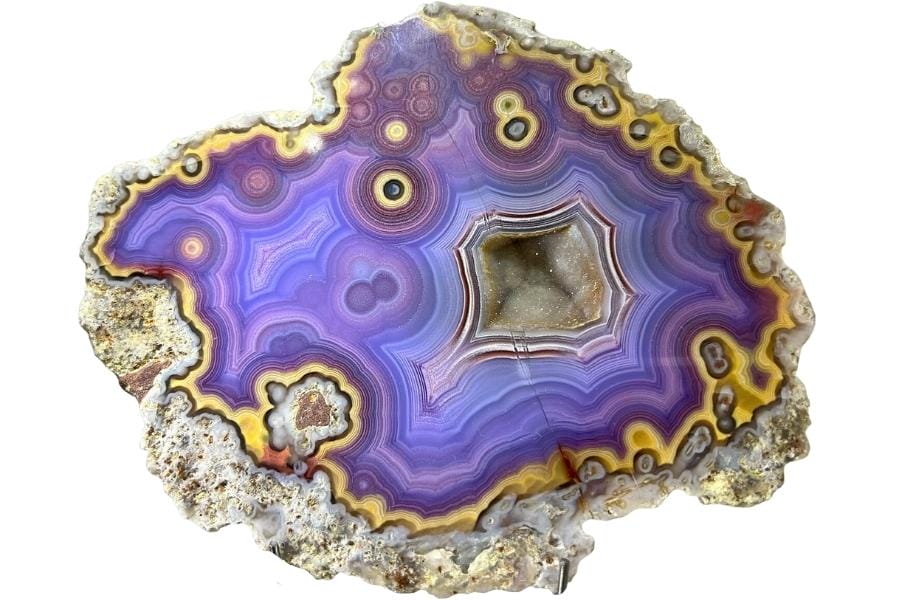
Before you head out to your agate hunting here, we’ll answer the most commonly asked question by rockhounds who’ve come here before you:
Is it illegal to collect agate in Arkansas?
Collecting agates in Arkansas is generally not illegal, as agates are considered common minerals here. However, there are important rules and guidelines to follow.
Always obtain permission from landowners before collecting on private property. In state parks, it’s crucial to check with the individual park authorities to understand the rules and requirements before collecting.
Also, make sure to be environmentally responsible while collecting. Arkansas has regulations in place to protect its natural resources.
If you need more information on our collecting guidelines, visit the website of the Arkansas Department of Parks, Heritage, and Tourism.
The Best Places To Buy Agates In Arkansas

Another great way to observe, find, and even bring home Arkansas agates is to visit our trusted rock and mineral shops. Below are some of them:
- Blue Moon Crystals & Jewelry – 6328 Hwy 270 E, Mt Ida, AR 71957
- Coleman’s Rock Shop & Crystal Mines – 5837 AR-7, Jessieville, AR 71949
- Fiddler’s Ridge Rock Shop – 3752 Hwy 270 E, Mt Ida, AR 71957
- Gem Adventures Rock Shop – 117 E Main St, Farmington, AR 72730
- Real Earth Creations – 3024 Hwy 270 E, Mt Ida, AR 71957
- Ron Coleman Mining Crystal Digging – 1400 E Grand Ave, Hot Springs, AR 71901
- Strange Magic Gems, Inc. – 210 N Reynolds Rd, Bryant, AR 72022
If you have any recommendations for our list please leave a comment below!




